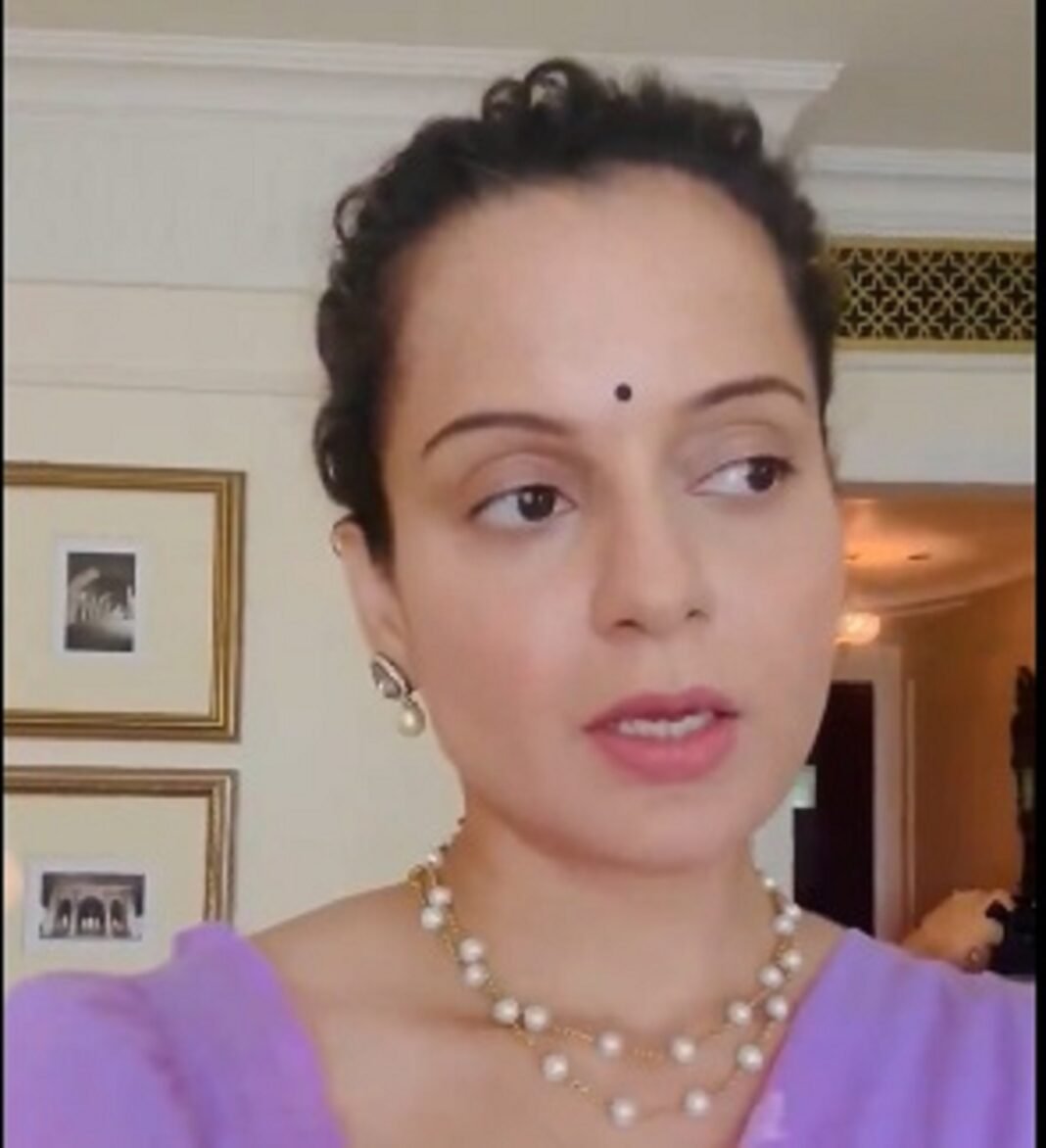-
Short of being defeated, Modi-led saffron party left severely bruised by the people’s verdict
-
Having reposed its confidence in him for a decade, increasingly impatient Nation puts Modi on final notice
-
Successes yes, but failures on some critical fronts, especially on employment generation, stings the ruling party
-
Arrogance, scorn for the Oppn, and dictatorial attitude rejected by the electorate
-
So has been targeted actions by investigating agencies against Oppn leaders to suit the ruling party’s political interests
-
Splitting parties to topple Oppn govts in states, and ‘washing machine’ actions have proved counter productive
-
Still No. 1 party: BJP is still by far the single largest party with number of seats nearly two-and-a-half times its nearest rival Congress, and greater than the entire INDIA alliance put together
-
Stability: With its NDA partners it still commands a clear majority and is geared to provide a strong and stable government
-
Results do not show any uniform trend across the country
-
BJP has suffered its biggest reverses from its LS 2019 tally, and overambitious LS 2024 targets, in the three largest states by way of seats – Uttar Pradesh, Maharashtra and West Bengal
-
At the same time, it has again swept Madhya Pradesh, Gujarat, Union Territory of Delhi, Uttarakhand and Himachal Pradesh, adding Odisha to its near clean sweep
-
It also staged a near coup in the Odisha assembly elections, wresting the state after 24 long years of Naveen Patnaik’s BJD rule
-
It handsomely won, single-handedly or along with other NDA partners – all the three other states – Andhra Pradesh, Arunachal Pradesh and Sikkim – which went into assembly elections simultaneously in various phases of the LS elections
-
The election results shut the mouths of the Opposition, which cried itself hoarse with persistent allegations of manipulation of EVMs
The results of the bitterly fought and highly vitiated Lok Sabha elections 2024 would mighty please all those who sincerely wanted to support the Modi government, perceiving it to be strong and steering the country generally in the right direction, but were increasingly getting impatient with its dictatorial ways and failures, especially on the employment generation front.
Particularly disconcerting was the arrogance and scorn with which the saffron party, and its government, was treating the Opposition and trying to destroy it, by misusing its brute muscle power to achieve its political goals.
So, here’s the largest and most powerful political party in the country, Bharatiya Janata Party (BJP), weakened, with a tally short of a simple majority mark of 272 by itself (it has been reduced to 240 from 303 in 2019), and having to depend for the first time ever on its National Democratic Alliance (NDA) partners to form a government.
While still being branded as Modi 3.0 for the world, to convey the message of continuity and stability, nevertheless the government’s critical dependence on its allies for its very survival would likely compel it to uphold the coalition ‘dharma’ of consultation and consensus.
A stronger combined Opposition in the Lok Sabha (INDIA Alliance, as it stands today, has a strength of 234 in the 543-member House, as against ruling NDA’s comfortable majority of 293) will also make it difficult for the government to push through legislations without proper debate, as had been happening in the past.
Advertisement

Political discourse vitiated
The political discourse during the elections, which stooped to levels that shamed the Nation, with personal attacks, distortion of facts and statements, fake news flooding the social media, and Prime Minister Narendra Modi being himself guilty of not holding back below-the-belt punches, has left such bitterness in its wake that it is sure to show its ugly face in the coming weeks and months.
The resurgent Opposition can be expected not to lose any opportunity to attack the government on every issue with the aim of keeping its momentum going. The prospects of more acrimony and more disruptions in Parliament remain high.
The diminished numbers of the ruling alliance in the Lok Sabha will probably also pose a serious challenge to the Modi government in its bid for nationwide roll out of the Uniform Civil Code (UCC) and push through some of the remaining controversial legislations on its agenda.
Its speculated intent to reintroduce the National Judicial Appointments Commission (NJAC) bill, governing the appointment of Chief Justice of India and other Judges of the Supreme Court (SC), and Chief Justice and other Judges of High Courts (HCs), could also run into rough weather.
Onus on government for conciliation
Under the given circumstances, the onus will lie on the government to start on a conciliatory note, put on hold any controversial decisions or legislations for the time being, open the doors for consultation with the Opposition parties on crucial issues, and allow fair time for discussion and debate in Parliament.
The changed circumstances could also create an atmosphere congenial for various autonomous and semi-autonomous bodies and agencies to reassert their independent functioning. These prestigious institutions had run into serious controversies of late for allegedly succumbing to government pressures and pushing its partisan agendas, seriously jeopardising their role as independent and impartial watchdogs.
Hopefully, the judiciary will start playing a more proactive role than it has been doing in speedily upholding the rule of law and the constitution in letter and spirit. The alleged ‘godi’ or ‘Modi’ media might also be compelled by the winds of change to adopt a more balanced approach towards the government/ruling alliance and the Opposition in the larger National interests.
Opposition assertion hard to digest
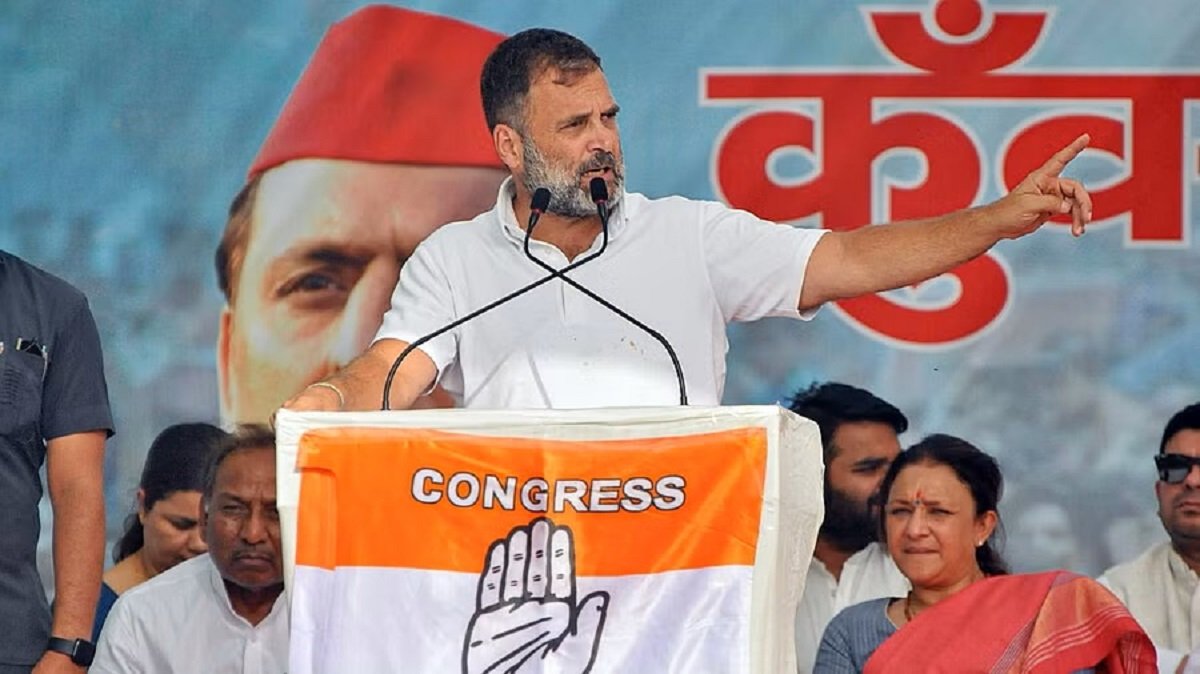
At the same time, taking a critical and holistic view of the elections, it would be difficult to agree with the Opposition assertions that with the reverses suffered by the BJP from its 2019 performance, and its overambitious targets set for the 2024 elections, the saffron party and Prime Minister Modi have lost the mandate of the people and the moral right to govern.
This narrative quite evidently is aimed at fuelling doubts in the minds of the people regarding the stability of the Modi led NDA coalition government and keeping its hopes alive for a likely opportunity in the not-so-distant future.
With 240 seats, BJP continues to remain the largest political party by far, eclipsing its nearest rival the Indian National Congress (INC), which is yet to reach the century mark (though it has nearly doubled its tally to 99 from 52 in 2019, when it failed to even secure 10% of the total Lok Sabha seats required to claim the post of Leader of the Opposition).
The saffron party’s tally is also greater than the combined strength of the entire INDIA alliance (240 against 234). Its national vote share, despite falling marginally from 37.3 percent in 2019 to 36.6 percent in 2024, is also nearly double that of the Congress’ 21.20 percent.
No comparison with wave elections in 2014, 2019
Overall, the 2024 outcome for the BJP is not all that bad, as projected by the INDIA alliance, considering that while in both the previous elections – 2014 and 2019 – there was a distinct Modi wave (2014 for change, and 2019 on account of the Balakot air strike on a terror camp inside Pakistan in retaliation to an audacious terror attack on a CRPF convoy in Pulwama area of Jammu & Kashmir), there was none in the latest elections.
The party has made up for its reverses by breaking new ground, and along with its NDA allies handsomely winning assembly elections in all four states which went to polls simultaneously with the Lok Sabha elections.
Coup of sorts in Odisha
The saffron party staged a coup of sorts in Odisha, where it swept the Lok Sabha elections, winning 20 of the 21 seats, and bringing an end to the 24-year-old rule of the Naveen Patnaik-led Biju Janata Dal (BJD) government with a thumping victory in the state assembly elections.

With Telugu Desam Party (TDP) led by Chandrababu Naidu back in the NDA fold, together with Pawan Kalyan’s Jana Sena Party, the three alliance partners swept the Lok Sabha polls in Andhra Pradesh, winning 21 of the 25 seats from the state, and registering a landslide win in the state assembly elections to dislodge YS Jagan Mohan Reddy’s YSRCP from power.
BJP’s another NDA partner Sikkim Krantikari Morcha (SKM) won the lone Lok Sabha seat in Sikkim and scripted a landslide victory in the state assembly polls to consolidate its hold in the state.
In Arunachal Pradesh, the BJP won both Lok Sabha seats and retained power with an overwhelming victory in the state assembly elections.
The ruling BJP also held sway in Assam, winning 9 of the 14 seats, with the Congress settling for 3.
Overall, in the eight North eastern states of Assam, Sikkim, Arunachal Pradesh, Meghalaya, Tripura, Manipur, Nagaland and Mizoram, most of which have one or two seats because of sparse population, BJP won 13. The Congress tally of seven included both the seats in strife-torn Manipur, one each wrested from the BJP and its ally.
Keep me out of this! ‘Ram Lalla’s’ divine message!
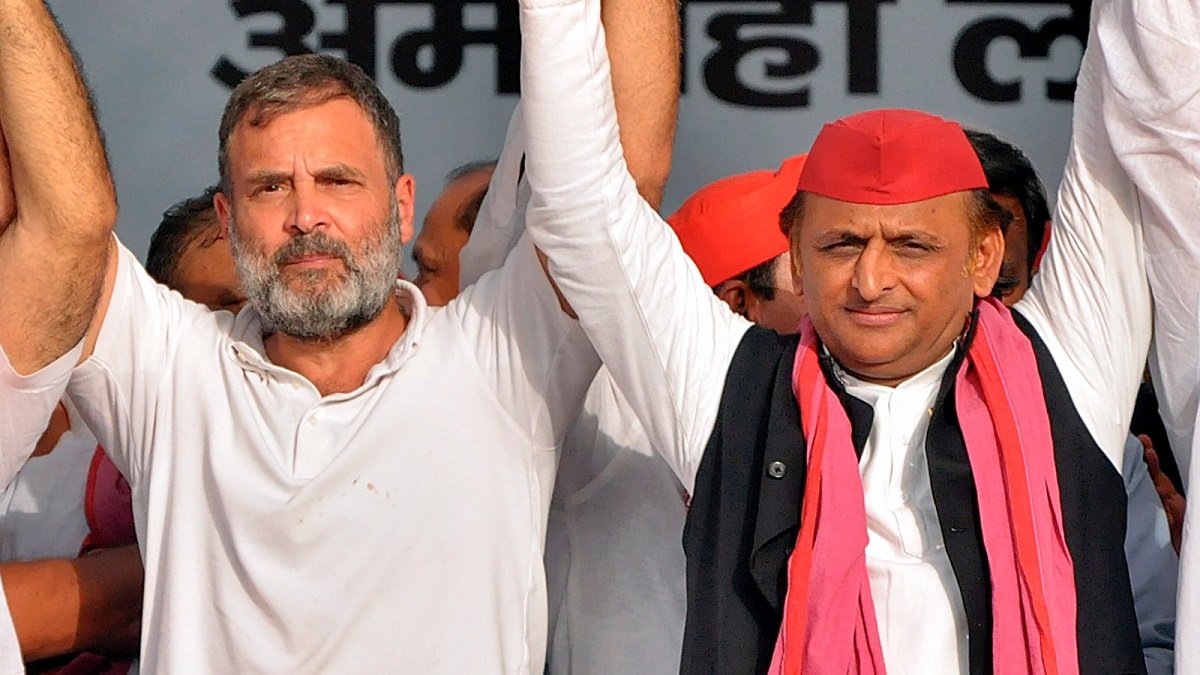
While BJP was able to maintain its hegemony in states like Madhya Pradesh (29 out of 29), Gujarat (25 out of 26), Himachal Pradesh (4 out of 4), Uttarakhand (5 out of 5) and the Union territory of Delhi (7 out of 7) during the Lok Sabha elections 2024, its biggest setback came from the state it had taken for granted for being the highest grosser to its national tally, Uttar Pradesh.
It’s tally in the state, which has the highest number of seats (80) in the country, nearly halved from a high of 62 seats in 2019 to 37, with a drastic fall in its vote share as well, from 49.6% to 41.4%.
Here Akhilesh Yadav’s Samajwadi Party (SP), which spearheaded the INDIA alliance with its partner INC, outsmarted the ruling BJP-led alliance in social engineering by galvanising the non-Yadav OBCs, Dalits and minorities behind the alliance with its narrative that in aiming for 400-par for NDA, the BJP had a hidden agenda of subverting the Constitution and withdrawing the reservations for Dalits and OBCs.
In its overconfidence, following the perceived groundswell of popular support for the party over the ‘pran pratishtha’ of ‘Ram Lalla’ at the Ram Temple in Ayodhya, the BJP and its allies failed to counter this narrative and paid such a heavy price that even Prime Minister Narendra Modi should consider himself lucky to have managed a third term from Varanasi, by a margin less than one-third of the 4.79 lakh victory margin in 2019.
In contrast, his arch-rival and Congress leader Rahul Gandhi won handsomely by 3.90 lakh votes from Rae Bareli, a seat vacated by his mother and Congress supremo Sonia Gandhi. The contrast in their victory margins was made even more stark by the fact that Rahul Gandhi decided to contest from a second seat, after Wayanad in Kerala, at the nick of time on the last day of filing nomination papers.
The shocking results for the party in the state also sunk the giant killer of the 2019 elections, Union minister Smriti Irani, who had then defeated Rahul Gandhi in the earlier Congress bastion of Amethi by 55,000 votes. Seeking re-election to the seat, Smriti in her arrogance kept challenging Rahul Gandhi to a rematch but was tamed by a first-time contestant and Gandhi family loyalist Kishori Lal Sharma, losing by 1.5 lakh votes.
In a near horror finish, the BJP could not defend the Ayodhya turf as well. It lost the Faizabad seat, which encompasses Ayodhya, to the Samajwadi Party by a margin of nearly 55,000 votes.
The INDIA alliance was also by far the largest beneficiary of the slide in vote share of the Bahujan Samaj Party (BSP) from 19.2% in 2019, when it was in alliance with the SP and won 10 seats, to 9.39 % in 2024 when it contested alone all 80 seats in the state but could not win a single.
Bad politics in Maha
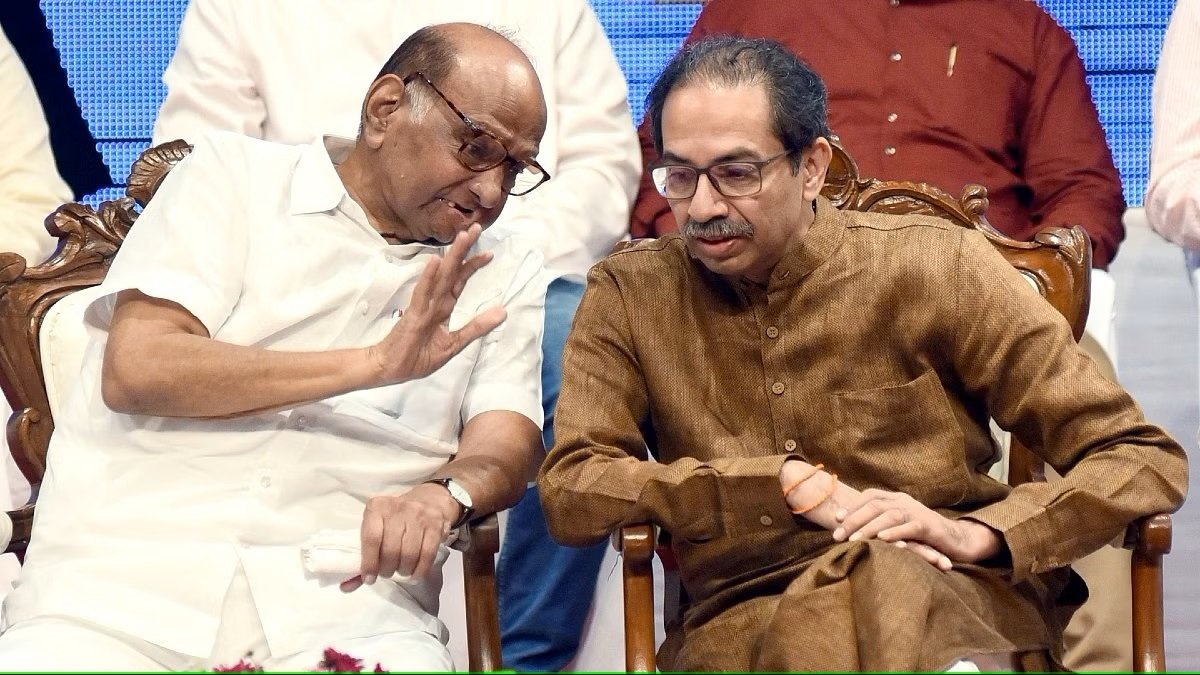
Maharashtra, another big state with 48 seats, proved to be BJP’s undoing due to its bad politics. The unpopular way in which the Maha Vikas Aghadi (MVA) alliance government of Shiv Sena, National Congress Party (NCP) and the Indian National Congress (INC) was dethroned by engineering break-ups in the two regional parties and having their election symbols snatched from them, apparently created a sympathy wave in favour of the alliance. As a result, MVA got the better of the ruling Mahayuti alliance of Chief Minister Eknath Shinde’s Shiv Sena, Ajit Pawar’s NCP and the BJP by 30 seats to 17.
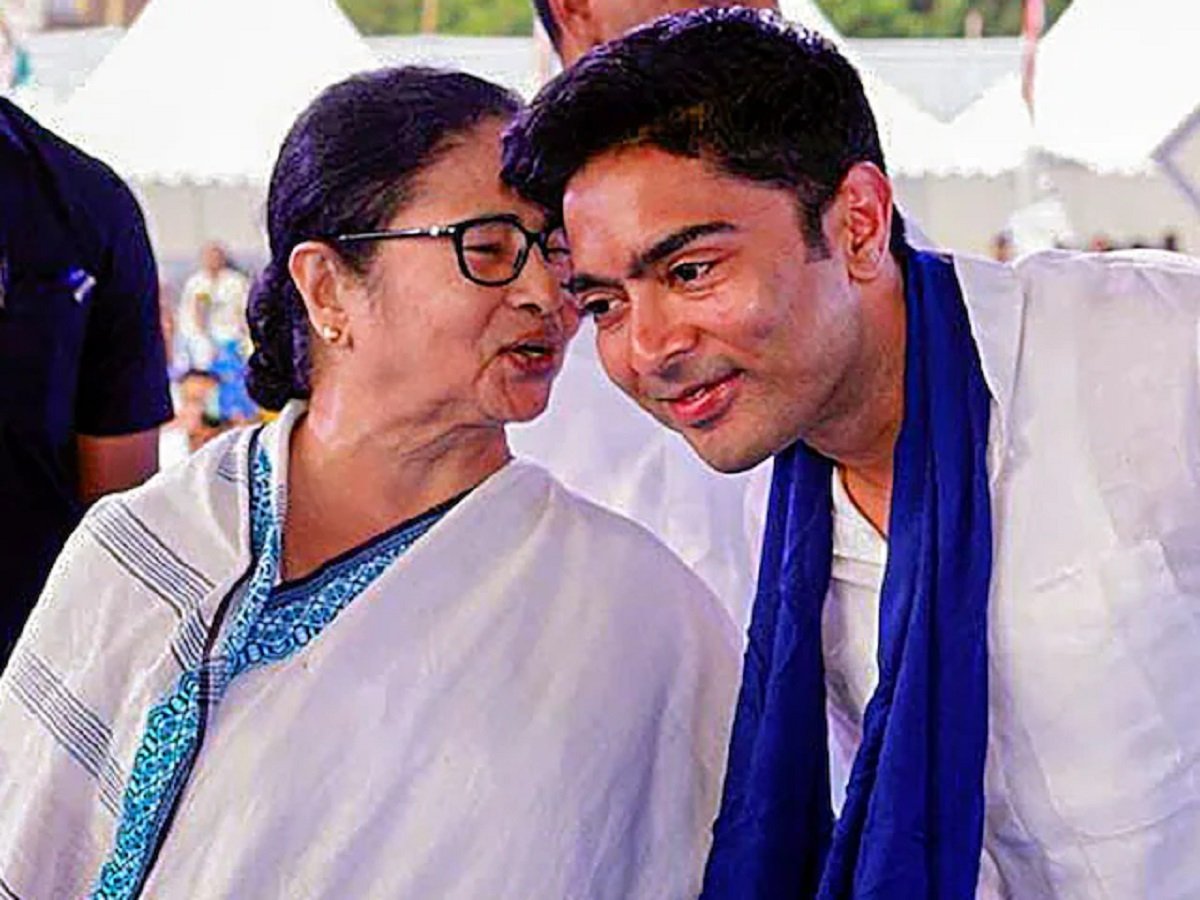
Among other setbacks to the BJP’s targets was West Bengal, the state with the third highest number of seats (42), where it was expected to make major inroads into the Mamata Banerjee citadel, but lost ground instead. The Trinamool Congress (TMC) supremo weathered the Sandeshkhali storm and the numerous corruption charges against her government to improve the party’s Lok Sabha tally from 22 seats in 2019 to 29 seats, with the BJP reduced to 12 seats, down by six seats from 2019, and INC squeezing in one seat.
Apart from Uttar Pradesh, the BJP suffered reverses in other Hindi heartland states like Bihar, Rajasthan and Haryana as well.
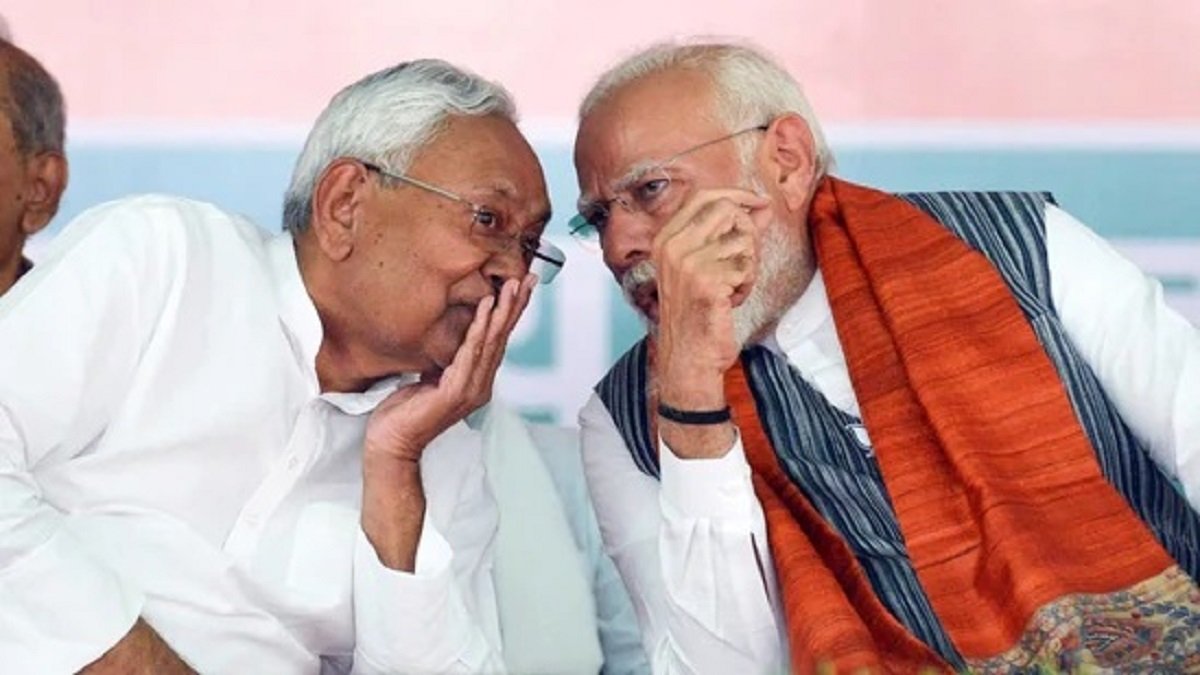
In Bihar, the resurrected NDA alliance comprising the BJP, Chief Minister Nitish Kumar’s Janata Dal (United), Chirag Paswan’s Lok Janshakti Party (Ram Bilas) and others, though it triumphed the INDIA Alliance 30 to 9 seats, fell short of its tally of 39 out of the 40 seats in 2019. Rashtriya Janata Dal (RJD) leader Tejaswi Yadav failed to weave the same magic for the INDIA alliance in the state as Akhilesh Yadav did in adjoining Uttar Pradesh even though the alliance had much higher hopes from Bihar.
Things also did not work out well for the BJP in Rajasthan, where it lost 11 seats from its 2014 and 2019 landslide of 25 out of 25 seats despite wresting the state from the Congress in the assembly elections just seven months ago.
In Haryana, the resurgent Congress led by former chief minister Bhupinder Singh Hooda sliced off half of the 10 on 10 BJP tally in 2019, compelling the BJP government, with a new chief minister, to scramble in view of the assembly elections around the corner in October.
Warning bells for Cong in Karnataka
The saffron party received eight seats less than its 2019 tally of 25 out of 28 in Karnataka, when it was in power in the state. But the 19 seats the BJP-Janata Dal (Secular) alliance won this time, despite the Congress having stormed back to power in the state with a massive mandate in the May 2023 assembly elections, has sent shock waves in the grand old party. The stark message is that its various welfare schemes have not resonated well with the electorate.
Among other southern states, the BJP doubled its tally in Telangana, matching the ruling Congress’ performance with eight seats.
In adjoining Andhra Pradesh, the re-stitched NDA alliance led by Chandrababu Nadu’s TDP swept the polls, winning 21 of the 25 seats, decimating the ruling YSRCP led by YS Jagan Mohan Reddy (4 seats) and the INDIA alliance, which drew a blank. Among the NDA partners, TDP won 16 seats, BJP three (it drew a blank in the 2019 polls) and Pawan Kalyan’s Jana Sena Party won two seats.
In the backdrop of former chief minister and ruling Jharkhand Mukti Morcha’s (JMM’s) executive president Hemant Soren’s arrest in a corruption case, the BJP suffered a backlash from the tribal communities and lost all five Lok Sabha seats reserved for Scheduled Tribes in Jharkhand.
Having won 12 out of 14 seats in the state in 2014 and 2019, the BJP and its alliance partner All Jharkhand Students Union Party (AJSUP) bagged three fewer seats this time (BJP 8, AJSUP 1) with the JMM-INC alliance gaining as many, to take their tally to five (JMM 3, INC 2). The state goes into assembly elections in six months.
This is in sharp contrast to BJP’s performance in another tribal dominated state Chhattisgarh, where it won 10 out of the 11 seats months after it won the assembly elections and made a tribal the chief minister.
A foothold in Kerala
The BJP created history by opening its account in Kerala. Its celebrity candidate, veteran actor Suresh Gopi, avoiding a hardline Hindutva agenda and pursuing a liberal campaign, made a giant kill in central Kerala constituency of Thrissur, defeating his nearest opponent from Communist Party of India (CPI) by nearly 75,00 votes. Congress stalwart K Muraleedharan was relegated to the third spot on his home turf.
The Congress-led United Democratic Front (UDF) swept the polls, winning 18 of the 20 seats.
However, despite a strong push, the saffron party with its alliance partner S Ramadoss’ PMK failed to open its account in Tamil Nadu. The ruling DMK along with other INDIA alliance constituents, including the Congress, made a clean sweep of all 39 seats in the state and the lone seat in the Union territory of Puducherry.
Warring Omar, Mehbooba suffer personal defeats
The first Lok Sabha elections, held after the abrogation of Article 370 and bifurcation of the state of Jammu & Kashmir into two independent Union territories, saw two big guns, both former chief ministers, fall silent.
Jammu and Kashmir National Conference (JK-NC) Vice President Omar Abdullah lost to independent candidate and former MLA Sheikh Abdul Rashid, also called Engineer Rashid, in Baramullah. Rashid is currently incarcerated in Tihar jail in a terrorism funding case.
Jammu & Kashmir People’s Democratic Party (JK-PDP) president Mehbooba Mufti fell to JK-NC candidate Mian Altaf Ahmed in Anantnag-Rajouri.
The third seat in the Kashmir region, Srinagar, was also bagged by JK-NC.
BJP did not put up any candidate in the region. It won both the seats in the Jammu region – Jammu and Udhampur.
The INDIA alliance, which also included the Congress, fell apart in the state after Farooq Abdullah’s JK-NC and Mehbooba’s JK-PDP failed to agree on a seat-sharing deal, resulting in the two regional parties putting up candidates against each other in all three seats in the Kashmir region.
Both parties supported the Congress in the two seats in Jammu region, but the grand old party could not open its account.
Agitating Ladakh choses independent
The incumbent BJP suffered an expected defeat in the lone seat in the Union territory of Ladakh, becoming a casualty of the protracted agitation in favour of the demand for Sixth Schedule rights for Ladakh to protect its fragile ecosystem and restoration of its statehood.
The main contest in the largest Lok Sabah constituency in the country, with a spread of 1,73,266 sq kms but with just 1.82 laakh voters, was expected to be between the BJP and the Congress, but eventually an independent candidate and a ‘haji’ from Muslim-dominated Kargil area, Mohammad Hanifa Jaan emerged victorious, defeating his immediate Congress rival with a comfortable margin. Haji is associated with the Kargil Democratic Alliance (KDA) which joined the agitation spearheaded by environmental activist and Ramon Magsasay award winner Sonam Wangchuk.
AAP among biggest losers
Among the biggest losers in the elections has been the embattled Aam Aadmi Party (AAP). Though it increased its strength in the Lok Sabha from one in 2019 to three this time, its dream for a clean sweep in the two states it governs – in alliance with its INDIA partner in Delhi (4-3 seat sharing formula in favour of AAP) and singularly in Punjab – stands shattered.
While its top leadership, including party supremo & Delhi Chief Minister Arvind Kejriwal and former deputy chief minister Manish Sisodia, being in jail in a money laundering case associated with the Delhi liquor policy may have been one of the major factors for the ‘jharu’ party’s disappointing performance in Delhi, the incident of alleged beating up of party’s Rajya Sabha MP Swati Maliwal at the Chief Minister’s official residence by his trusted associate while the chief minister was on bail for electioneering also slurred the party’s image.
Similarly in Punjab, from where it won its three seats, the party’s confidence of grabbing all 13 seats was shattered by the Congress’ unexpectedly impressive showing with seven seats. The two seats won by Sikh hardliners, including a jailed ‘Khalistani’ activist, should also serve as a warning signal for the Bhagwant Singh Mann led AAP government which needs to urgently take strong and decisive steps to address the simmering extremism in the border state.
Earlier in a byelection, necessitated by the resignation of Bhagwant Mann as Member of Parliament from Sangrur following the AAP’s landslide victory in the 2022 assembly elections in the state and his ascendancy as chief minister, another Sikh hardliner Simranjeet Singh Mann of the Akali Dal (A) had surprisingly been elected MP from the seat. AAP wrested back the seat this time.
Giving credit where it’s due
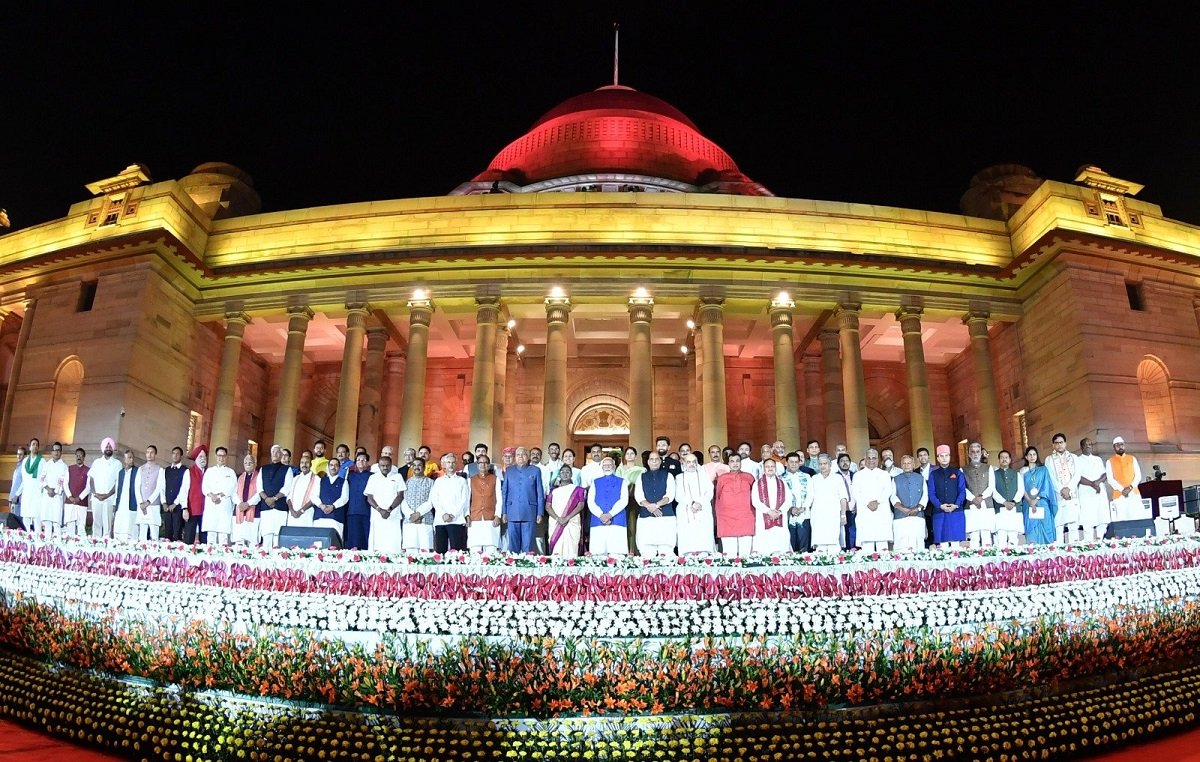
The BJP’s compulsion of forming a coalition government for the first time with the help of its NDA partners, following the electoral reverses suffered by it, can be compared to market corrections in stocks.
Narendra Damodardas Modi cannot be denied credit for emulating India’s first Prime Minister Jawahar Lal Nehru’s feat in 1962 of being sworn-in as head of government for a third consecutive full five-year term.
Given that the BJP still is the goliath that dwarfs its allies, the transition from a single party government to an alliance government has been rather smooth, with none of the hectic and arm-twisting prolonged bargaining that goes with coalition government formation.
Two berths each for the two largest partners – Chandrababu Naidu’s TDP with 16 LS seats and Nitish Kumar’s JDU with 12 LS seats – and 11 berths in all for all allies in Modi’s 72-strong jumbo council of ministers appears to have satisfied all sides, at least for the time being.
The allocation of portfolios has also not kicked up any controversies within the NDA even through Prime Minister has retained the core ministries like Defence, Home, Road Transport & Highways, Health, Agriculture, Finance, Foreign Affairs, Commerce & Industry, Petroleum & Natural Gas, Education, Railways, etc. with the largest ruling party.
To signal continuity, he has allocated these portfolios to the same ministers as in Modi 2.0, barring Agriculture, which goes to former Madhya Pradesh chief minister Shivraj Singh Chauhan, and Health, to which outgoing party president JP Nadda returns after his Modi 1.0 innings at the helm of the ministry.
Some of the immediate tasks ahead
- Shedding the path of confrontation, and adopting one of consultation and consensus
- Doubling down on efforts to find an amicable solution to the burning more-than-yearlong Meitei-Kuki ethnic strife in the Northeastern state of Manipur, which has claimed scores of lives and resulted in displacement of hundreds. Despite its complete failure the BJP-led N Biren Singh government continues in office, and PM Modi’s absolute silence on the issue is worrying. Had it not been a BJP-led government, it would probably have been dismissed by now. This has raised serious questions over the government’s political will to quell the violence.
- Negotiating an early and lasting solution to the belligerent farmers’ agitation by restoring mutual trust and returning to the table with clean hands and an open mind; finding a balance between the farmers’ and the country’s long-term interests
- Chalking out a clear roadmap for targeted skilling and re-skilling of the workforce on a massive scale keeping emerging trends in mind, and taking focussed and determined steps to ensure accelerated employment generation
- Removing the flaws in the ‘agniveer’ scheme of recruitment to the armed forces in the wake of its nationwide opposition in its current form. The process is already under way and bearing finalisation.
- Not appeasing or alienating entire communities, but building trust through persistent and constructive engagement with them
- Greater focus on education, health and environmental protection; massively scaling up the nationwide monitoring and regulatory apparatus for guaranteeing pollution-free air and water, and adulteration-free food and drugs
- Continue to strengthen the government’s efforts and initiatives in the civil and defence fields to achieve the goal of ‘Atmanirbhar Bharat’
- Keep exploring opportunities for improving ties with neighbouring countries, especially India’s hostile relations with Pakistan, China and Maldives with new approaches



